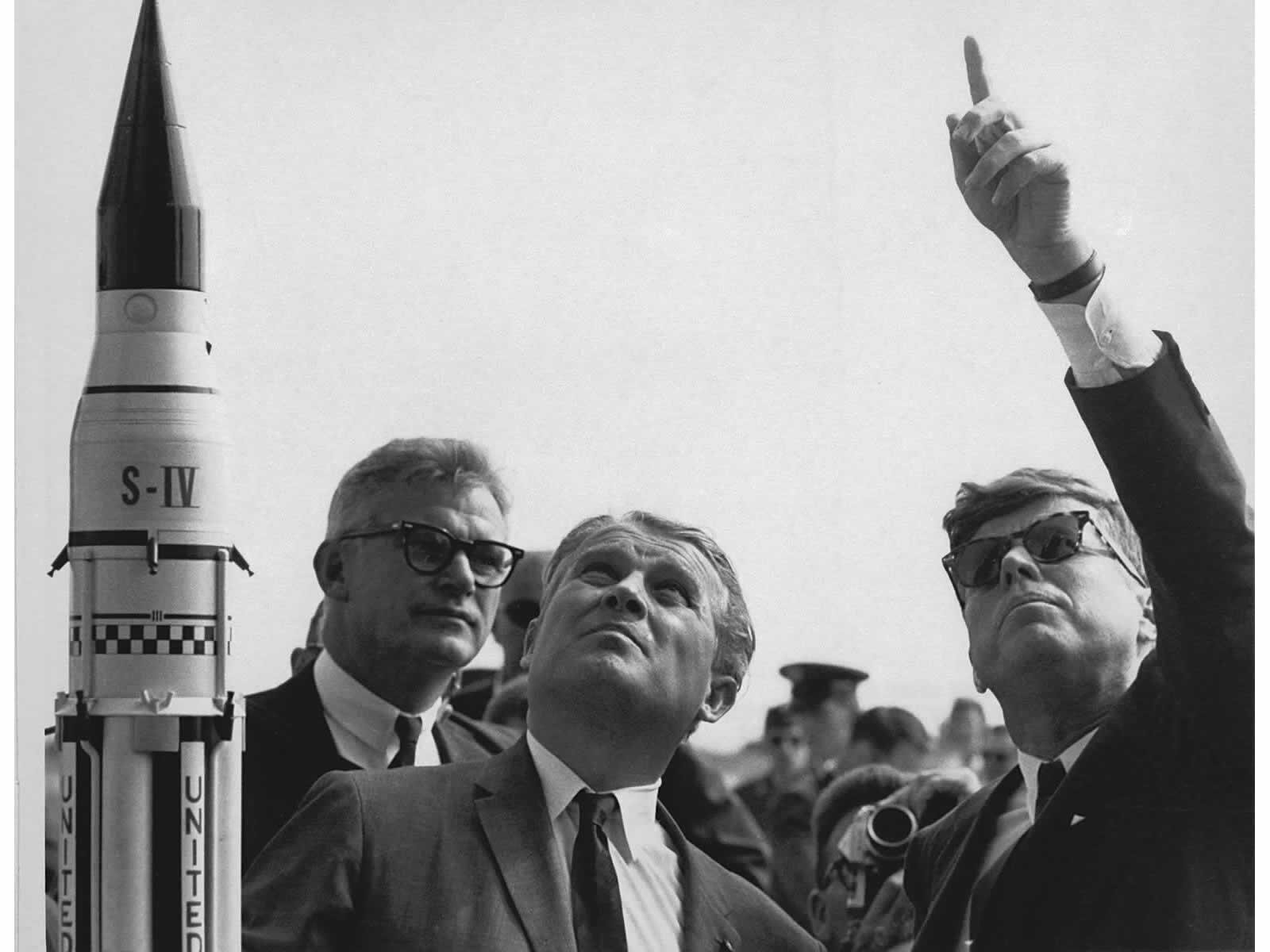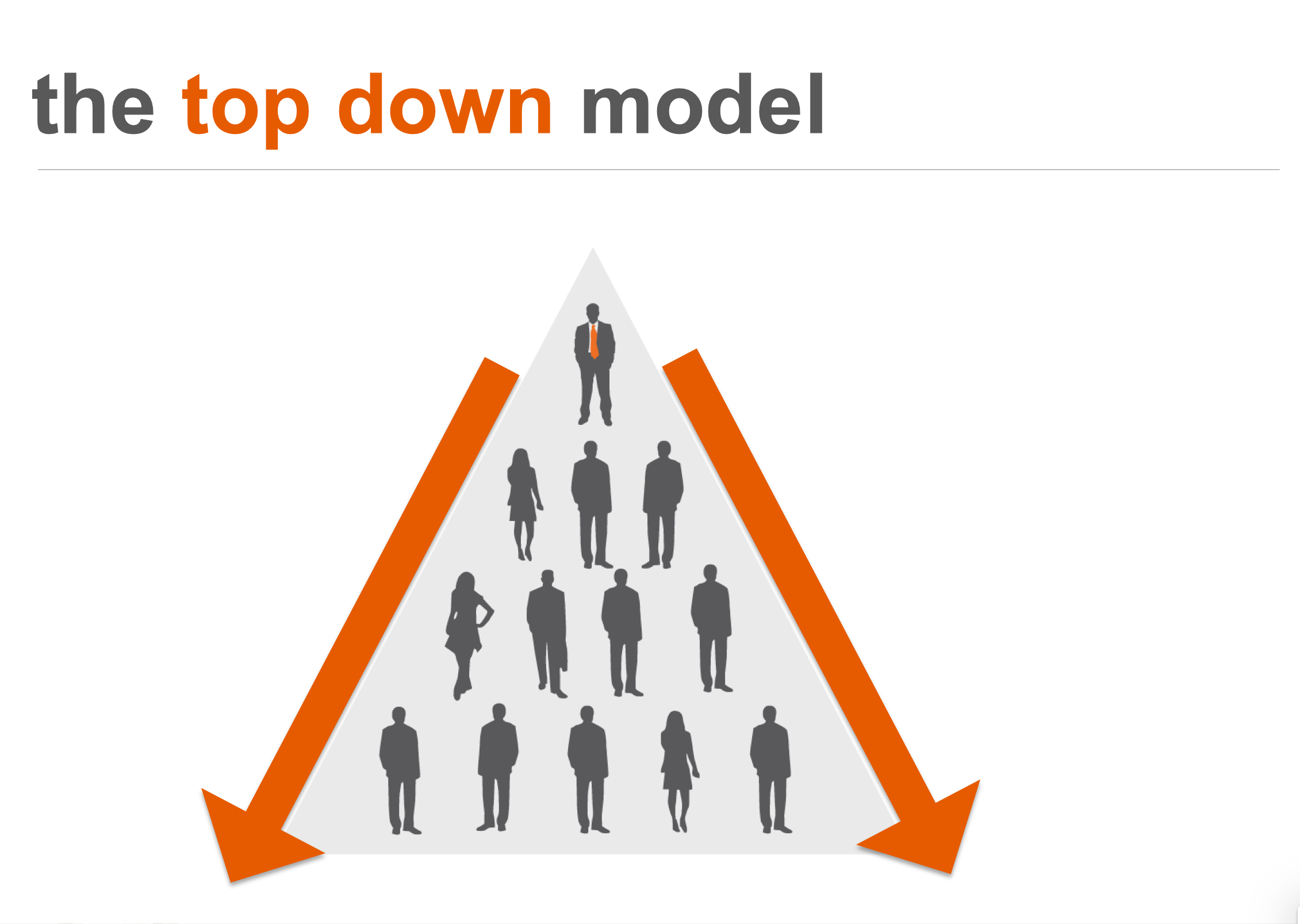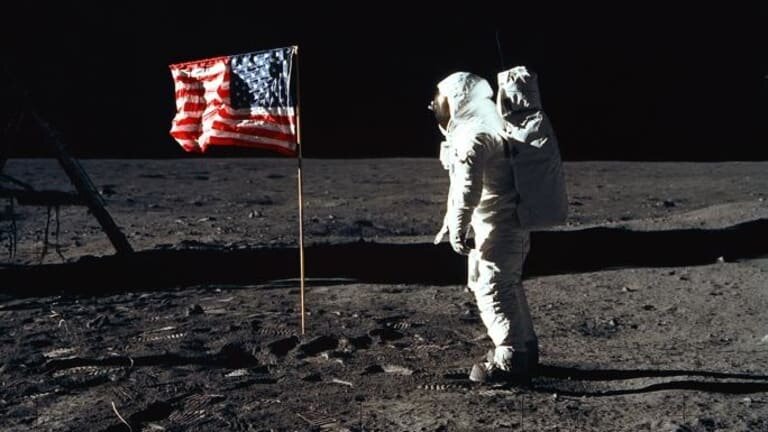Taking Your Organization to the Moon? Consider this first…
I’d like to tell you a story. One of my favorite stories. It starts out in 1962 at Rice University – Kennedy’s iconic speech – you all know it – “we choose to go to the moon in this decade, and do the other things, not because they are easy but because they are hard.”

Kennedy at Rice University, September 1962
So what was happening in 1962? – the Cold War – Bay of Pigs in 61, the Soviets had beaten us to space by sending a cosmonaut named Yuri Gagarin up to orbit the planet and he’d come home alive. It was widely believed that we were losing the space race in ‘62.
And this is why Kennedy’s speech is iconic – he cast a single unifying vision out into the future and captured the imagination of the entire world.

Kennedy visits Cape Canaveral, November of 1963
But our story takes place a year later – 1963 at Cape Canaveral. By this time, NASA has bloomed into becoming the third largest federal agency in the US. Kennedy is there to tour the facility – you can imagine it – a full entourage of scientists, pilots, facilities people, PR and security detail following behind. And according to the records, Kennedy is coming down a hallway and sees an old man, the janitor mopping floors and the president stops and asks the man, “so what is it that you do here, sir?”
And as legend would have it, the man set down his mop, looked directly into the eyes of the president of the United States and said, “I’m helping put a man on the moon Mr. President.”

Wow.
400,000 working at NASA racing to accomplish this extraordinary mission and even the janitor got it. 400,000 people all the way down to the man mopping the floors – everyone focused on a single vision. That’s how they did it. And the rest is history.
So, was that a remarkable achievement because of technology? Because of microchips and space suits? No. Of course not. It was the people. It was the unleashing of human potential, the spirit of adventure, and organizing their hearts and minds toward a singular, common goal. That’s how we got to the moon.
Now, you and I have something important in common. We believe that people are our organization’s greatest assets. We all know the power of unleashing human capital and the joy it brings to see people endeavoring together, unified under a common cause.
But I know a secret. I know something funny happens when these initiatives are pitched in the boardroom – something gets lost in translation, something doesn’t come across. Somehow these vital, potent initiatives transform into something soft, something that can’t be measured, that can’t be quantified and somehow they go from being urgent and important to merely being important. And then that’s the last we hear of them.
But we cannot allow that. We must do better.
And I believe it starts with us – we have to do better at helping leadership see the equation differently. We have to reframe the mental model so leaders understand the flow of information in the modern enterprise.
Since back in Kennedy’s time, the 1960s – all the way back to the 1860’s we’ve been operating the same way. The FLOW of information inside of companies hasn’t changed. 120 years and no one has questioned it.
Well, I’m here to question it.

the top down model
Here it is, the top-down organizational model called the Corporation. It started with the railroad and telegraph companies in the 1860s – they were trying to wrangle a lot of people and an awful lot of geography and so they borrowed a model from the military – top down, command and control. Most of those guys came out of the Civil War and it’s what they knew. But what’s bananas is that we’re still running this play today.
Vision at the top, WHY at the top, and WHAT and HOW pushed down to the workers.
Not to say this model doesn’t have its’ merits. This model CAN and DOES work under certain market climates.
This model works great if the pace of change is slow or non-existent. If the rules don’t change. It works if there is no disruption or innovation in your industry. It works if you have a huge middle management team to drive accountability and implementation and it works just fine if you have a workforce that is motivated by scarcity to do what they’re told, when, and how and won’t question authority. Like an army.
So of course, this model is totally useless for us. It’s totally incongruent with the times we live in. It’s 120 years old and totally broken yet no one even questions it.
But if you want to drive your next people initiative, you need to start here with leadership and help them see another framework.
Imagine if you could onboard a new employee consistently and efficiently but also make them fall in love with your purpose and mission. Imagine if you could clone your top sales person or drive consistency across teams. Imagine if you could harvest the institutional wisdom of your exiting executives. You can. And you can get buy-in. But you have to change the model.
This is what we call a Wisdom Driven Enterprise. It’s more dynamic, more versatile, and agile. This is a model where everyone has access to the vision, the why, and the how of the organization. The flow of information is no longer just top down, but operates more like a conversation where information flows outward but also in, as wisdom is captured in the field and transformed into corporate learning assets.

TM 2010 – 2020 PlaybookBuilder, LLC All rights reserved.
This is a model for the pace of life in the 21st century. A model where everyone can gain access to the WHAT, the HOW and WHY. It’s sort of like a company campfire right? Where everyone can gather around and share and learn.
And what do we share around the campfire? Operations manuals? PPT decks? Schematics? No. We share…what? YES! Stories! We share our stories around the campfire. Since our earliest origins, stories are our best delivery system for information. Stories capture the HOW and the WHY at the same time. Stories share the content and the context. And stories are how communities unite around common goals and values.
Do you know Kennedy’s Rice University speech? “We choose to go to the moon…”
Were you there in 1962? No, probably not. Yet we’ve all seen it. How? VIDEO!
Video is so powerful yet we forget the importance of it. Video is how we can capture the powerful stories inside our companies. And I don’t mean with a huge film crew – I mean with your phone. Your phone can do a perfectly good job of capturing the stories and moments inside your organization. You always have it on you, it’s convenient, and informal which means you’ll capture authenticity.
Now how to get those stories? Here’s a tip – don’t ask people to recite the mission statement or tell you how they live the values every day. You’ll wind up with crap that’s so corny and fake that you won’t want to use it. Instead, get people to tell you HOW they do parts of their job and the stories will just come out of them.
Look, if you ask your grandma to show you how she makes her famous apple pie you’ll not only learn about the ingredients and how to roll the dough, you’ll also get an entire family history going back to the Great Depression. The lesson here is that people LIVE your values in how they do every day things and by asking and capturing those things, I promise you, you’ll fall in love with your company all over again.
Going to the Moon probably sounded crazy in 1962. But when you activate human potential anything is possible. Capture the knowledge of your organization and change the framework for how knowledge flows and you can unleash the incredible power and competitive advantage of your organization – your people.

Apollo 11, July 20, 1969
